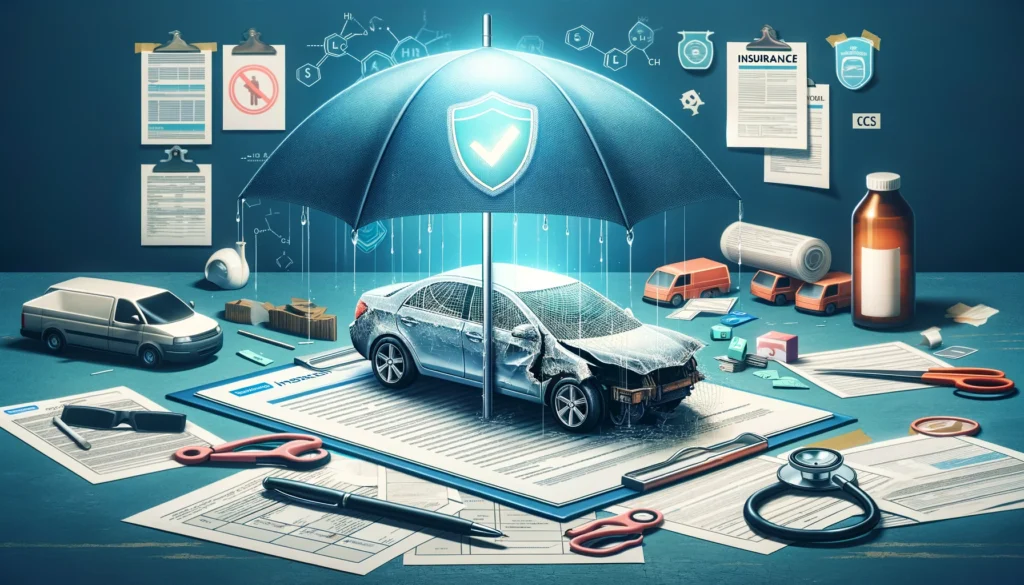
Congratulations on getting your driver’s license! As a new driver, there’s a lot to learn and consider, and one crucial aspect of responsible driving is car insurance. It’s not just about protecting your vehicle; it’s also about safeguarding yourself and others on the road. Here’s a comprehensive checklist to ensure you have the essential car insurance coverage as a new driver.
Understanding the Basics
What is Car Insurance?
Car insurance is a financial safety net that protects you from the costs associated with an accident. It covers things like:
- Bodily injury liability: Pays for medical expenses of others injured in an accident you cause.
- Property damage liability: Pays for repairs to other people’s vehicles or property damaged in an accident you cause.
- Collision coverage: Pays for repairs to your own vehicle if you collide with another object or vehicle.
- Comprehensive coverage: Pays for repairs to your own vehicle from events other than collisions, like theft, vandalism, fire, or animal strikes.
These are just the main types of coverage; there are many additional options available depending on your needs and state requirements.
Why is it Necessary?
Car insurance is mandatory in most places because it provides financial protection in case of accidents, theft, or damage to your vehicle. It also covers liability expenses if you’re at fault in an accident, including medical bills and legal fees.
The Checklist
1. Research and Compare Policies
Before purchasing car insurance, it’s essential to research and compare policies from various insurance companies. Look for reputable insurers with good customer reviews and competitive rates. Websites like NerdWallet or Insure.com can help you compare policies easily.
2. Determine Your Coverage Needs
Consider the minimum coverage required by law in your state and whether you need additional coverage. Common types of car insurance coverage include:
- Liability Insurance: Covers bodily injury and property damage if you’re at fault in an accident.
- Collision Coverage: Pays for damage to your vehicle in case of a collision with another car or object.
- Comprehensive Coverage: Protects your car from non-collision incidents like theft, vandalism, or natural disasters.
- Personal Injury Protection (PIP): Covers medical expenses for you and your passengers regardless of fault.
3. Assess Your Budget
While comprehensive coverage offers the most protection, it can also be more expensive. Assess your budget and determine how much you can afford to pay for car insurance premiums each month. Balance coverage options with affordability to find the best policy for your needs.
4. Understand Deductibles
A deductible is the amount you’ll pay out of pocket before your insurance kicks in. A higher deductible typically means lower premiums, but it also means you’ll pay more upfront in the event of a claim. Consider your financial situation and choose a deductible that you can comfortably afford.
5. Check for Discounts
Many insurance companies offer discounts for various reasons, such as:
- Good Student Discount: For maintaining a certain GPA.
- Safe Driver Discount: For avoiding accidents and traffic violations.
- Multi-Policy Discount: For bundling car insurance with other types of insurance, like renters or homeowners.
- Safety Features Discount: For having anti-theft devices or safety features in your vehicle.
Ask your insurer about available discounts to lower your insurance costs.
6. Review Policy Limits
Policy limits determine the maximum amount your insurance company will pay for covered losses. Ensure that your policy limits are sufficient to cover potential expenses in case of an accident. If necessary, consider increasing your coverage limits for added protection. Does car insurance cover repairs?
7. Understand Exclusions
Exclusions are situations or circumstances not covered by your insurance policy. Common exclusions include pre-existing damage, racing, or using your vehicle for commercial purposes. Read your policy carefully to understand what is and isn’t covered.
8. Consider Additional Coverage Options
In addition to standard car insurance coverage, consider additional options like roadside assistance, rental reimbursement, or gap insurance. These extras can provide added peace of mind and protection in specific situations.
9. Review and Update Regularly
Your car insurance needs may change over time due to factors like changes in driving habits, vehicle upgrades, or life events. It’s essential to review your policy annually and update it as needed to ensure you have adequate coverage.
Important Tips for New Drivers
- Good student discounts: Many insurance companies offer discounts to students with good grades.
- Taking a defensive driving course: Completing a defensive driving course can lead to lower premiums by demonstrating your commitment to safe driving.
- Adding a telematics device: Some insurers offer usage-based insurance programs where premiums are based on your actual driving habits (e.g., mileage, braking frequency). This can be a great option for new drivers with good habits.
- Staying on your parents’ policy (if possible): If you’re a named driver on your parents’ policy with a clean driving record, you might benefit from their lower premium. However, this depends on your age, state laws, and the insurance company’s policy.
Conclusion
Car insurance is a crucial aspect of responsible driving for new drivers. By following this checklist and understanding the basics of car insurance, you can ensure you have the necessary coverage to protect yourself and others on the road. Remember to research, compare policies, and regularly review your coverage to make informed decisions. Safe driving!
Remember, being prepared with the right car insurance can make all the difference in ensuring a smooth driving experience. Don’t hesitate to invest time in understanding your coverage needs and finding the right policy that fits your requirements and budget.
Now that you’re armed with this essential knowledge, go ahead, explore your options, and drive with confidence!


